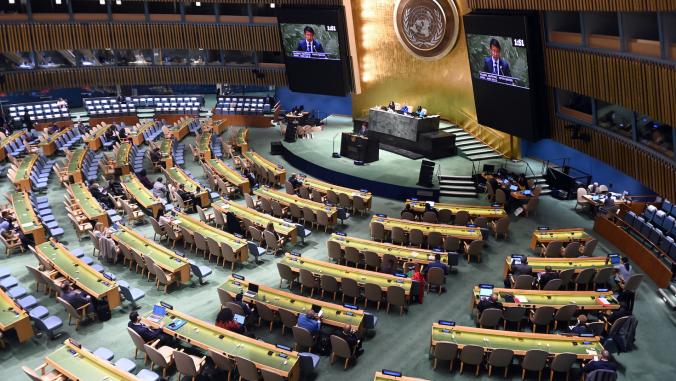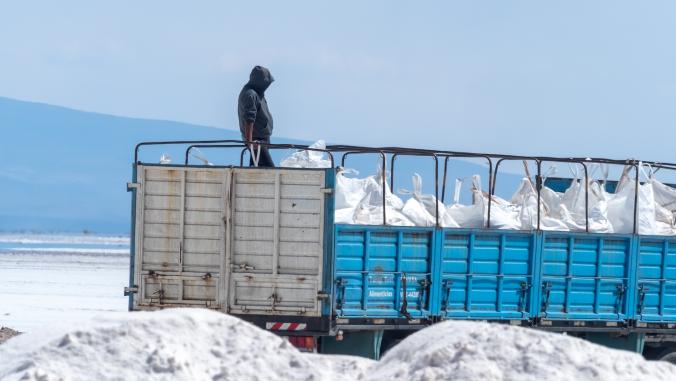The Colorado River Basin: Where the reality of water stress collides with public policy
The existing shortage isn't a short-term drought, it's the new long-term normal.

I was at a breakfast business meeting in Denver a couple of weeks ago and the topic was the Colorado River basin. The discussion focused on the Colorado River Compact (aka "The Law of the River") and the current state of affairs over the allocation of water within the basin and the impact of climate change. For me, the presentation was one more example of the disconnect and tensions between public policy, perceptions and reality.
The Colorado River system is under stress from increased demand for water in an arid region of the United States. As a result of the basin in an arid climate and the rapidly increasing number of users, the Colorado has become one of the most physically and legally managed rivers in the world. A WRI Report on the 18 Most Water Stressed Rivers ranked the Colorado as the 14th most stressed among the world’s most populated river basins and the sixth most stressed if ranked by size. In 2014, the year of the study, more than 30 million people depended on the basin for water and the seven states receiving water from the basin comprised 19 percent of the United States’ total GDP in 2010.
First, the public policy and legal framework background on the Colorado River Compact (PDF) to set the stage. The compact is a complex legally binding agreement covering the allocation of water from the Colorado River. It was negotiated by the seven Colorado River Basin states and the federal government in 1922. It defined the relationship between the upper basin states, where most of the river's water supply originates, and the lower basin states, where most of the water demands were developing.
At the time, the upper basin states were concerned that plans for Hoover Dam and other water development projects in the lower basin would, under the Western water law doctrine of prior appropriation, deprive them of their ability to use the river's flows in the future. The availability of water in the basin is monitored on an ongoing basis by the National Weather Service and Colorado Basin River Forecast Center (CBRFC) and reported by the U.S. Department of the Interior Bureau of Reclamation.
It is an understatement to say that the region has changed considerably since 1922 when the compact was signed. One only has to look at cities such as Phoenix in the lower basin and Denver in the upper basin, to imagine the tensions that are developing. Demand for water greatly has increased: driven by population growth and the needs of regional industries such as agriculture, oil and gas, recreation and high-tech manufacturing.The Colorado is the world's 14th most stressed river basin and the sixth most stressed, if ranked by size.
What hasn’t changed, however, are local perceptions about water and the Law of the River.
In my view, many public and private sector stakeholders in the Colorado River Basin believe that the region is experiencing a drought and that a return to normal precipitation is likely. An example of this belief can be found in the Western Governor's Association Drought Forum, which brought attention to regional water scarcity but refers to the issue as "the drought."
If the challenge of water availability in the Colorado River Basin is framed as a drought, there will be resistance to near-term actions to ensure long-term availability of water. In other words, why take short-term actions if we just need to hope for rain or snowfall to end the drought?
All stakeholders in the upper and lower basin need to face reality that they need to act now to ensure sustainable and resilient water supply for the region. Without near-term actions to support a long-term strategy, there won’t be water for economic development, business growth and social and ecosystem well-being.
An Arizona Central story March 2 frames the tension between short-term action versus a long-term plan. Many Arizona officials, including Gov. Doug Ducey, want to "allow water users to skip delivery of some of their allocation this year to prevent shortages in future years. Such legislation would ensure that, if they leave the water in the reservoir, they can retrieve it later if river conditions improve." However, The Central Arizona Project, whose canal delivers the water to Phoenix and Tucson, has opposed the idea, preferring to stick with existing programs. According to the Arizona Central article:
The agency has made the argument that holding small amounts of water in Lake Mead as the state proposes could backfire and bring shortages sooner. CAP officials argue that conserving too much too quickly could rob Arizona of water and force it to raise rates on millions of Arizonans to pay the canal’s bills even as the CAP sells less water through it.
In my view, this point of view ignores reality. No one wants to give up their water allocation, but this is not a drought — it is the new normal and certainly not 1922, when the compact was signed.
The issue was framed well by Arizona Water Resources Director Tom Buschatzke, quoted in the Arizona Central article saying that "A plan to let nature replenish the system is not a plan, right?"
Perhaps it is time to refresh the Law of the River to reflect our current realities — the over-allocation of water and the impact of climate change is the "new normal."





